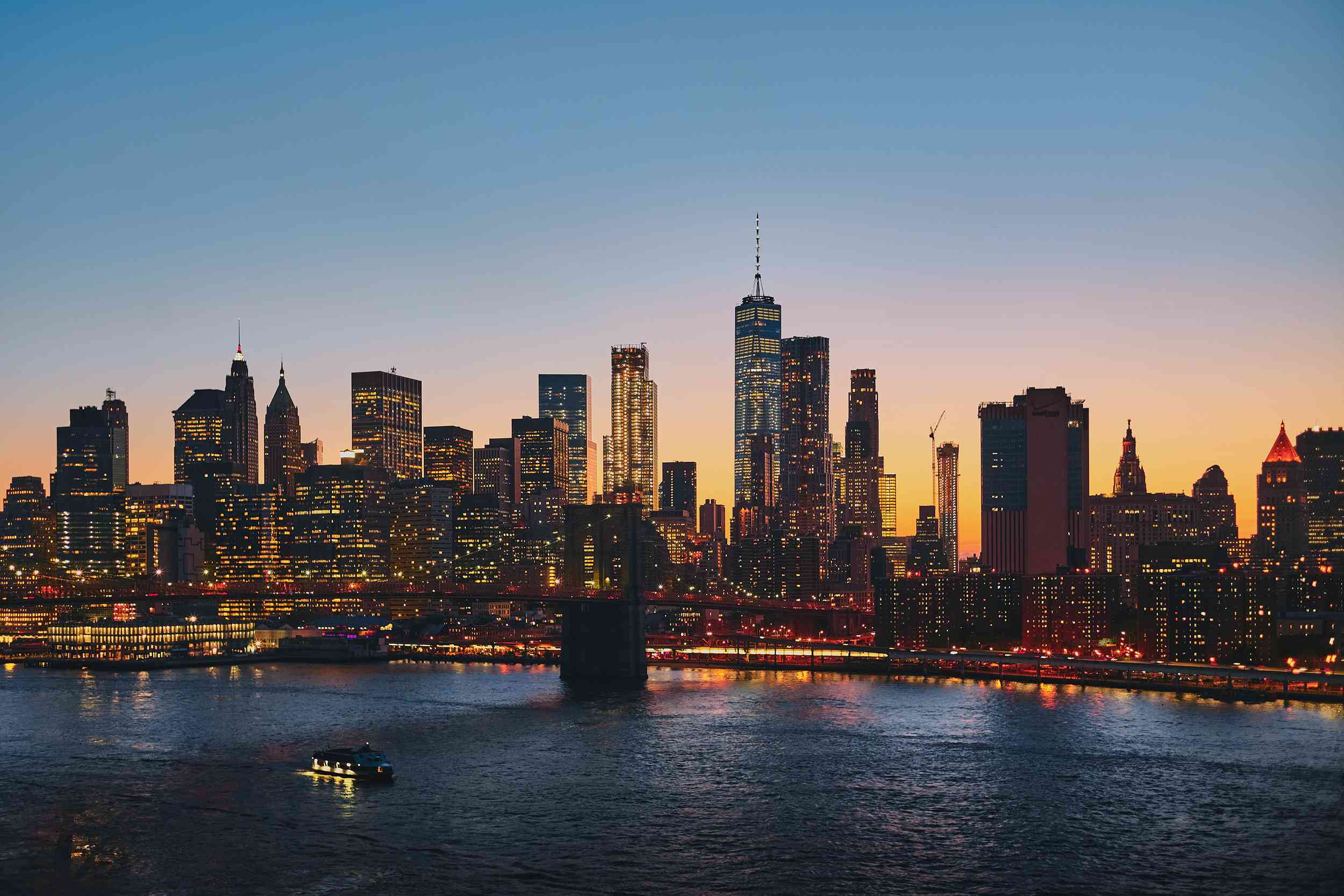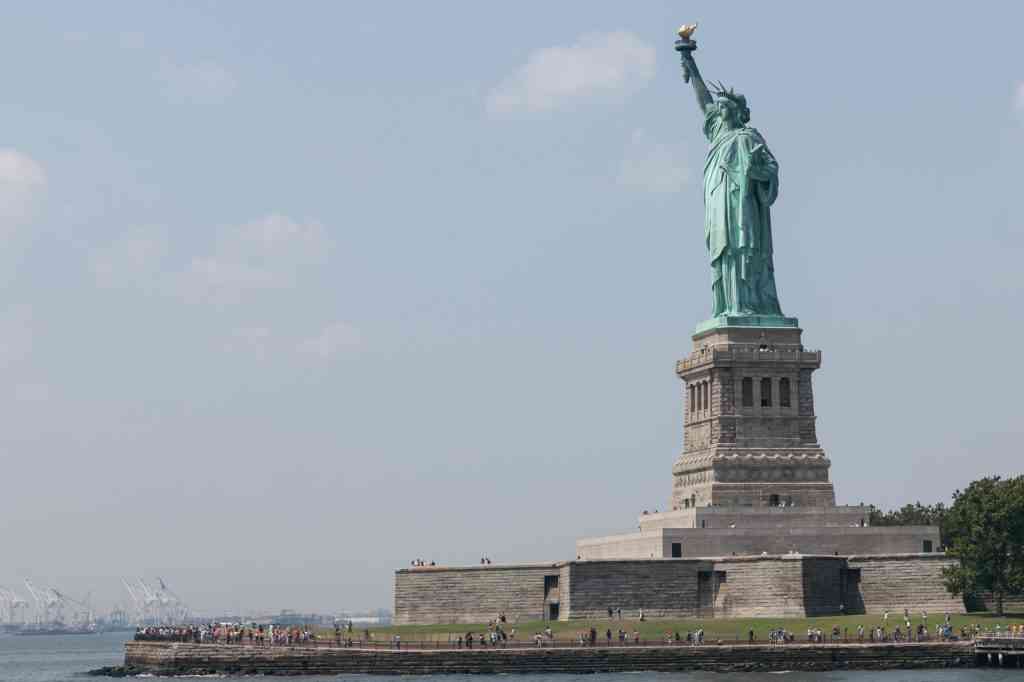Table of Contents
Can You Drink Tap Water in New York?
Yes, New York's tap water is generally considered safe to drink as New York has no active health based violations of the Safe Drinking Water Act (SDWA) that we are aware of. Other factors such as lead piping in a home, or low levels of pollutants on immunocompromised individuals, should also be considered, however. To find more recent info we might have, you can check out our boil water notice page, the city's water provider website, or New York's local Twitter account.
According the EPA’s ECHO database, from April 30, 2019 to June 30, 2022, New York's water utility, New York City System, had 0 violations of the Safe Drinking Water Act. For more details on the violations, please see our violation history section below. The last violation for New York was resolved on Oct. 31, 2012. This assessment is based on the New York City System water system, other water systems in the city may have different results.
While tap water that meets the EPA health guidelines generally won’t make you sick to your stomach, it can still contain regulated and unregulated contaminants present in trace amounts that could potentially cause health issues over the long-run. These trace contaminants may also impact immunocompromised and vulnerable individuals.
The EPA is reviewing if it’s current regulations around pollutant levels in tap water are strict enough, and the health dangers posed by unregulated pollutants, like PFAS.
Water Quality Report for New York Tap Water
The most recent publicly available numbers for measured contaminant levels in New York tap water are in its 2020 Water Quality Report. As you can see, there are levels which the EPA considers to be acceptable, but being below the maximum allowable level doesn’t necessarily mean the water is healthy.
Lead in tap water, for example, is currently allowed at up to 15ppb by the EPA, but it has set the ideal goal for lead at zero. This highlights how meeting EPA standards doesn’t necessarily mean local tap water is healthy.
EPA regulations continue to change as it evaluates the long term impacts of chemicals and updates drinking water acceptable levels. The rules around arsenic, as well as, lead and copper are currently being re-evaluated.
There are also a number of "emerging" contaminants that are not currently. For example, PFAS (Per- and polyfluoroalkyl substances), for which the EPA has issued a health advisory. PFAS are called "forever chemicals" since they tend not to break down in the environment or the human body and can accumulate over time.
We recommend looking at the contaminants present in New York's water quality reports, or getting your home's tap water tested to see if you should be filtering your water.
New York Tap Water Safe Drinking Water Act Violation History - Prior 10 Years
Below is a ten year history of violations for the water system named New York City System for New York in New York. For more details please see the "What do these Violations Mean?" section below.
For the compliance period beginning Feb. 1, 2017, New York had 1 health-based Safe Drinking Water Act violation with the violation category being Treatment Technique Violation, more specifically, the violation code was Treatment Technique Uncovered Reservoir which falls into the Microbials rule code group, and the Surface Water Treatment Rules rule code family for the following contaminant code: Long Term 2 Enhanced Surface Water Treatment Rule.
From Oct. 1, 2012 to Oct. 31, 2012, New York had 1 health-based Safe Drinking Water Act violation with the violation category being Treatment Technique Violation, more specifically, the violation code was Treatment Technique (SWTR and GWR) which falls into the Microbials rule code group, and the Surface Water Treatment Rules rule code family for the following contaminant code: Surface Water Treatment Rule.
From April 1, 2012 to April 30, 2012, New York had 1 non-health based Safe Drinking Water Act violation with the violation category being Monitoring and Reporting, more specifically, the violation code was Monitoring of Treatment (SWTR-Unfilt/GWR) which falls into the Microbials rule code group, and the Surface Water Treatment Rules rule code family for the following contaminant code: Surface Water Treatment Rule.
Is there Lead in New York Water?
Based on the EPA’s ECHO Database, 90% of the samples taken from the New York water system, New York City System, between sample start date and sample end date, were at or below, 0.012 mg/L of lead in New York water. This is 80.0% of the 0.015 mg/L action level. This means 10% of the samples taken from New York contained more lead.
While New York water testing may have found 0.012 mg/L of lead in its water, that does not mean your water source has the same amount. The amount of lead in water in a city can vary greatly from neighborhood to neighborhood, or even building to building. Many buildings, particularly older ones, have lead pipes or service lines which can be a source of contamination. To find out if your home has lead, we recommend getting you water tested.
No amount of lead in water is healthy, only less dangerous. As lead accumulates in our bodies over time, even exposure to relatively small amounts can have negative health effects. For more information, please check out our Lead FAQ page.
Are there PFAS in New York Tap Water?
Currently, testing tap water for PFAS isn’t mandated on a national level. We do have a list of military bases where there have been suspected or confirmed leaks. There appears to be at least one military base - BETHPAGE NY NWIRP - near New York with suspected leaks.
With many potential sources of PFAS in tap water across the US, the best information we currently have about which cities have PFAS in their water is this ewg map, which you can check to see if New York has been evaluated for yet.
Our stance is better safe than sorry, and that it makes sense to try to purify the tap water just in case.
New York SDWA Violation History Table - Prior 10 Years
| Compliance Period | Status | Health-Based? | Category Code | Code | Rule Code | Contaminant Code | Rule Group Code | Rule Family Code |
|---|---|---|---|---|---|---|---|---|
| 02/01/2017 - | Addressed | Yes | Treatment Technique Violation (TT) | Treatment Technique Uncovered Reservoir (47) | Long Term 2 Enhanced Surface Water Treatment Rule (123) | Long Term 2 Enhanced Surface Water Treatment Rule (0800) | Microbials (100) | Surface Water Treatment Rules (120) |
| 10/01/2012 - 10/31/2012 | Resolved | Yes | Treatment Technique Violation (TT) | Treatment Technique (SWTR and GWR) (41) | Surface Water Treatment Rule (121) | Surface Water Treatment Rule (0200) | Microbials (100) | Surface Water Treatment Rules (120) |
| 04/01/2012 - 04/30/2012 | Resolved | No | Monitoring and Reporting (MR) | Monitoring of Treatment (SWTR-Unfilt/GWR) (31) | Surface Water Treatment Rule (121) | Surface Water Treatment Rule (0200) | Microbials (100) | Surface Water Treatment Rules (120) |
What do these Violations Mean?
Safe Drinking Water Act Violations categories split into two groups, health based, and non-health based. Generally, health based violations are more serious, though non-health based violations can also be cause for concern.
Health Based Violations
- Maximum contaminant levels (MCLs) - maximum allowed contaminant level was exceeded.
- Maximum residual disinfectant levels (MRDLs) - maximum allowed disinfectant level was exceeded.
- Other violations (Other) - the exact required process to reduce the amounts of contaminants in drinking water was not followed.
Non-Health Based Violations
- Monitoring and reporting violations (MR, MON) - failure to conduct the required regular monitoring of drinking water quality, and/or to submit monitoring results on time.
- Public notice violations (Other) - failure to immediately alert consumers if there is a serious problem with their drinking water that may pose a risk to public health.
- Other violations (Other) - miscellaneous violations, such as failure to issue annual consumer confidence reports or maintain required records.
SDWA Table Key
| Field | Description |
|---|---|
| Compliance Period | Dates of the compliance period. |
| Status |
Current status of the violation.
|
| Health-Based? | Whether the violation is health based. |
| Category Code |
The category of violation that is reported.
|
| Code | A full description of violation codes can be accessed in the SDWA_REF_CODE_VALUES (CSV) table. |
| Contaminant Code | A code value that represents a contaminant for which a public water system has incurred a violation of a primary drinking water regulation. |
| Rule Code |
Code for a National Drinking Water rule.
|
| Rule Group Code |
Code that uniquely identifies a rule group.
|
| Rule Family Code |
Code for rule family.
|
For more clarification please visit the EPA's data dictionary.
New York Water - Frequently Asked Questions
| By Mail: | 59-17 Junction Blvd. FLUSHING, NY, 11373 |
Existing customers can login to their New York City System account to pay their New York water bill by clicking here.
If you want to pay your New York City System bill online and haven't made an account yet, you can create an account online. Please click here to create your account to pay your New York water bill.
If you don't want to make an account, or can't remember your account, you can make a one-time payment towards your New York water bill without creating an account using a one time payment portal with your account number and credit or debit card. Click here to make a one time payment.
Moving to a new house or apartment in New York means you will often need to put the water in your name with New York City System. In order to put the water in your name, please click the link to the start service form below. Start service requests for water bills typically take two business days.
Leaving your house or apartment in New York means you will likely need to take your name off of the water bill with New York City System. In order to take your name off the water bill, please click the link to the stop service form below. Stop service for water bills requests typically take two business days.

The estimated price of bottled water
$2.34 in USD (1.5-liter)
USER SUBMITTED RATINGS
- Drinking Water Pollution and Inaccessibility
- Water Pollution
- Drinking Water Quality and Accessibility
- Water Quality
The above data is comprised of subjective, user submitted opinions about the water quality and pollution in New York, measured on a scale from 0% (lowest) to 100% (highest).
Related FAQS
Contaminants
New York City System
EWG's drinking water quality report shows results of tests conducted by the water utility and provided to the Environmental Working Group by the New York Department of Health - Bureau of Public Water Supply Protection, as well as information from the U.S. EPA Enforcement and Compliance History database (ECHO). For the latest quarter assessed by the U.S. EPA (January 2019 - March 2019), tap water provided by this water utility was in compliance with federal health-based drinking water standards.
Utility details
- Serves: 8958659
- Data available: 2012-2017
- Data Source: Surface water
- Total: 16
Contaminants That Exceed Guidelines
- Bromodichloromethane
- Bromoform
- Chloroform
- Chromium (hexavalent)
- Dibromochloromethane
- Dichloroacetic acid
- Total trihalomethanes (TTHMs)
- Trichloroacetic acid
Other Detected Contaminants
- 1%2C4-Dioxane
- Chlorate
- Chromium (total)
- Haloacetic acids (HAA5)
- Monochloroacetic acid
- Nitrate
- Nitrate and nitrite
- Strontium
Reminder
Always take extra precautions, the water may be safe to drink when it leaves the sewage treatment plant but it may pick up pollutants during its way to your tap. We advise that you ask locals or hotel staff about the water quality. Also, note that different cities have different water mineral contents.
Sources and Resources
Sources Cited
Additional Resources
Current Weather in New York City
NEW YORK WEATHERSome of the Convenience Stores in New York

- Sunrise Mart 日本local food
- New Rochelle APlus at Sunoco
- 7-Eleven
- Duane Reade
- Speedway Gas Station
- On the Run
- QuickChek
- Greenwich Village Farm
- West 82 Grocery Inc
- 99 Cents
Estimated Price of Bottled Water
| Volume | USD | EUR | GBP |
| 1.5-liter | $2.30 | €2.06 | £1.84 |
| 500ml | $0.89 | €0.81 | £0.72 |
Can you drink tap water in New York? It is safe to drink tap water in New York despite horrific news about lead-contaminated water in Flint, Mich. No wonder some people now doubted drinking tap water in New York.

New Yorkers are proud to announce that the water is safe. Thankful to people who started the aqueduct system 175 years ago.
The government also invested billions in preserving water quality.
The water can get contaminated once moves into pipes that supply individual buildings, homes, and even schools that occurred recently in Newark, New Jersey.
Living in an older house that may have lead pipes, it is recommended to take precautions to reduce the risk of lead contamination. You need to run tap water for 30 seconds every morning.

Source of Water in New York
The majority of New York’s water supply comes from the Catskill/Delaware basin. And the remaining 10 percent comes the Croton basin. The basin lies beyond a million acres, owned both by public and private sectors. It is highly regulated to make sure contaminants stay out of the water.
For more information, check the“New York City Drinking Water Supply and Quality Report for 2018.”
People may also request a printed copy of the latest quality results, or for questions about any information, please call 311.